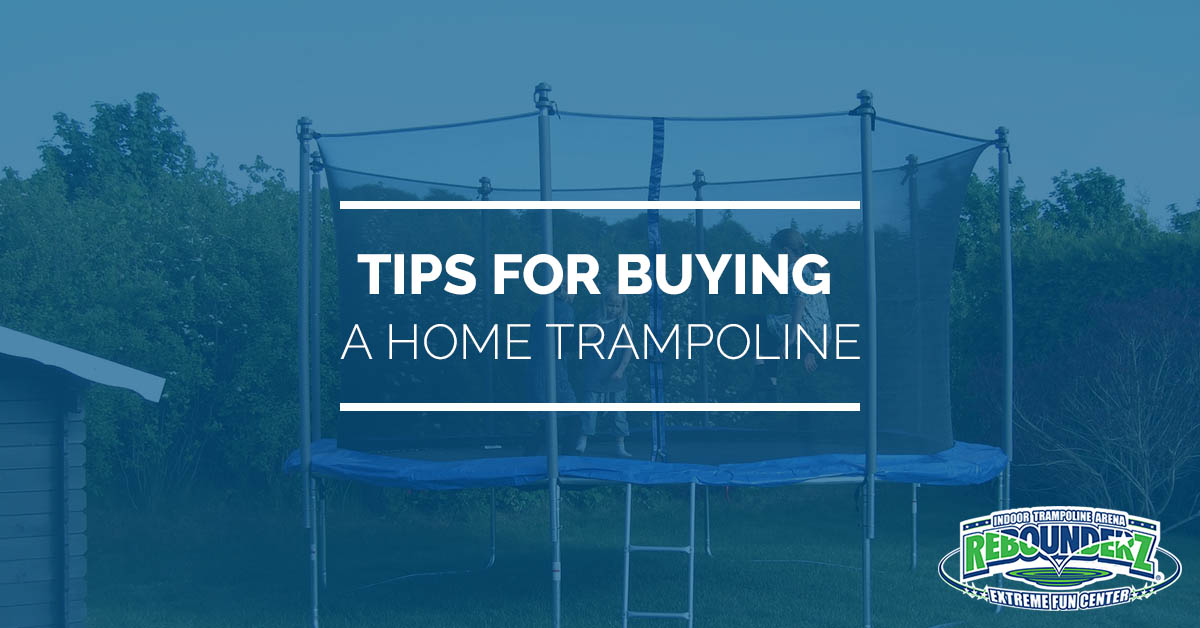Tips For Buying a Home Trampoline

As an indoor trampoline park, we completely understand the wide appeal of trampolines. There’s something thrilling about getting a good bounce on, and feeling that moment at the apex of your jump, where maybe gravity won’t pull you back down, and this time you’ll just go flying off into the clouds. Not only that, but bouncing is an amazing workout, both more fun and more effective than jogging.
Like we said, we get it. That’s why we have longtime returning customers, and some of them opt to continue the fun by buying their own trampoline and setting it up at home. But there are a few features that matter, and they’re ones you likely didn’t consider when you bounced on a trampoline as a kid. To help you make the right purchase for your family and yourself, read on for some helpful tips for buying a trampoline.
- One of the first things to consider is the weight limit of the trampoline. Are you buying something small for a toddler or a more durable tramp that can handle a bunch of rambunctious teenagers? Every trampoline made will have the weight limit listed prominently by the manufacturer, and it’s critically important to consider the weight before you buy.
- Next, you’ll want to consider whether or not your trampoline is going to have an enclosure attached. Most enclosures are a tightly woven mesh, and they’re designed to keep people from flying off the edge if a bounce sends them in the wrong direction. Are enclosures necessary? Well, that’s up to you. We will tell you that, out of 100,000 children aged 4 or under, about 70 of those kids will be injured on the trampoline. For kids aged from 5-14, there are approximately 160 injuries per 100,000 kids.
- If you’re a parent, you likely know that kids aged 5 and under don’t usually have a great command of balance, and can often fall down while just standing. As a result, stability bars can be a smart move. While they will limit the amount of jumping that can be done, they’re a great way for smaller kids to begin mastering balance while staying safe.
- One of the most common problems people run into with trampolines is the dual issue of where it will go and how much space it will take up. Most people underestimate how much space their trampoline will occupy. Before making a purchase, get the precise measurements and measure it out at the place where you’re putting it. We shouldn’t have to tell you this, but never, never put a trampoline on a hard surface like concrete. Always place it on grass. Falling off a trampoline into the grass could hurt, but falling onto concrete will absolutely hurt.
- Along similar lines, safety is a big deal when it comes t a trampoline, and today’s models often have excellent features. Sturdy padding on the springs prevents painful pinches from occurring, a durable frame prevents a collapse, no-gap enclosures keeps jumpers from falling through a hole they didn’t notice, and rust resistant springs help the trampoline last longer and stay stronger.


